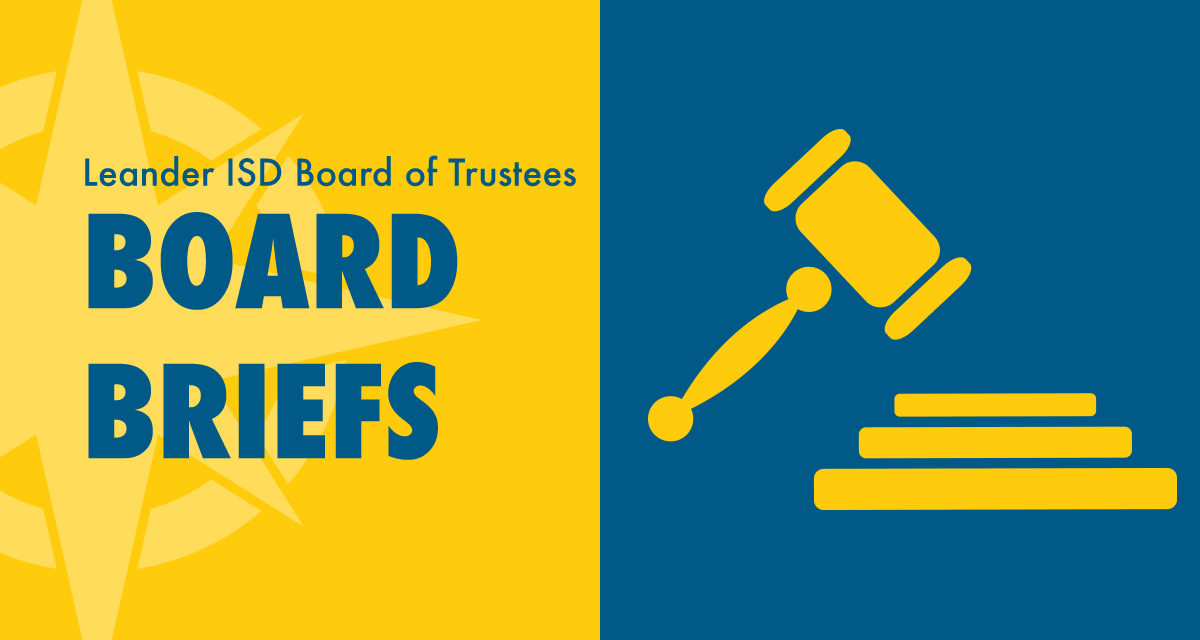During its Nov. 15 workshop, the Leander ISD Board of Trustees discussed the following topics:
- Latest demographer’s report
- Rising Costs, Shifting Student Population Impacting Long Range Plan
- Attendance rezoning process for middle schools and high schools
- Continued work of the Citizens’ Facility Advisory Committee
Demographer projects moderate growth for the district
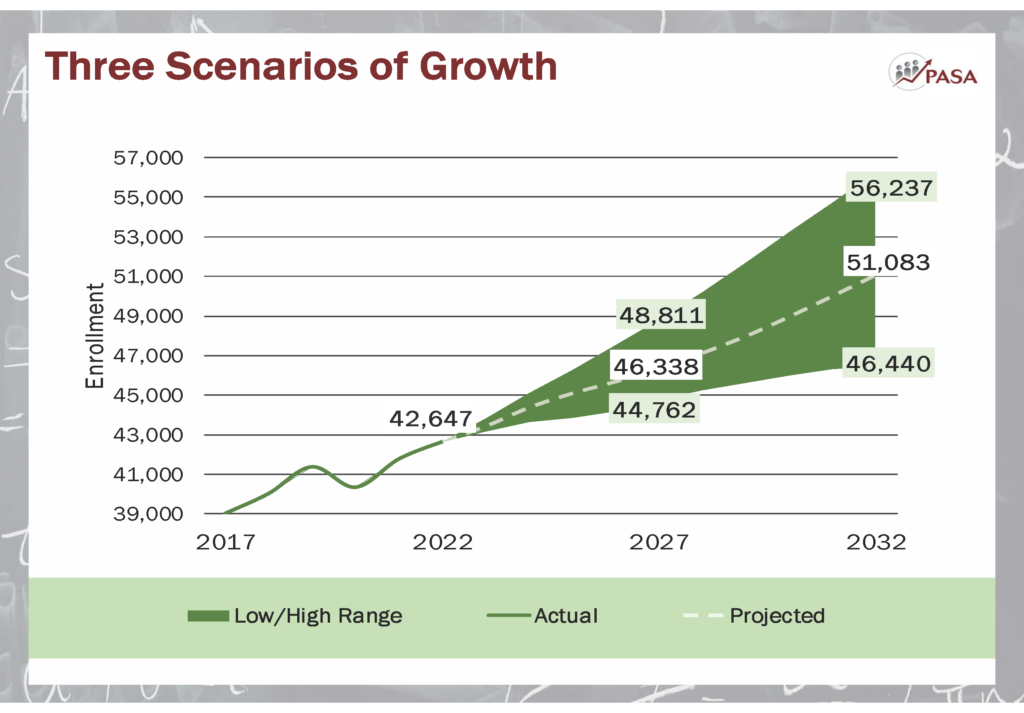
🎬 3.A. Annual Demographic Report 2022
In an annual update to the Board, representatives from Population and Survey Analysts (PASA) shared their latest findings. Leander ISD is currently made up of 42,647 students. PASA develops three growth scenarios – low, moderate and high – looking out over the next 10 years. In the moderate-growth scenario, LISD would hit 46,338 students in 2027 and 51,083 students in 2032.
Factors included into student projections:
- New housing construction
This is the largest driver of future growth. - Birth rates
Changes in birth rates impact kindergarten enrollment five years later. - Aging of the existing student population
This is reflected in certain grade-level classes being larger than others as they move through the system, creating a bubble-like effect where a school’s enrollment can increase for a small number of years before dropping back to prior trends. - Regeneration in existing neighborhoods
This happens when younger families — with elementary-aged children — move in to replace empty-nesters whose kids have already been through the LISD system and graduated. Neighborhoods in the central and south areas of the district are not regenerating to bring in a new batch of kids. - Pandemic-related decline of students
Projections no longer assume these students will return to the district. - New charter schools
Five new charter campuses are expected in the LISD area in the next 1-3 years, drawing out a projected 4,000-plus students, doubling the amount of students currently attending charter schools who live within the LISD boundary.
“It has been interesting to hear from other districts across the state that have experienced fast growth before charters moved in. And now they’re looking at schools they built that they no longer need,” said Board Vice President Gloria Gonzales-Dholakia, Ph.D. “I think we really do need to think this through. We don’t want to be on the other end of building new schools just to have them be underutilized.”
As these numbers and factors show, additional students are still coming to LISD, but these projections also illustrate focalized areas of high growth in the northern part of the district combined with a declining number of students in the central and southern geographic areas. This dynamic – one recognized a year ago with the forming of the Long-Range Planning Committee – has only increased in magnitude in the latest projections, with the areas of high growth forecasting even more growth than expected and the areas with declining enrollment decreasing at a faster rate.
Rising Costs, Shifting Student Population Impacting Long Range Plan
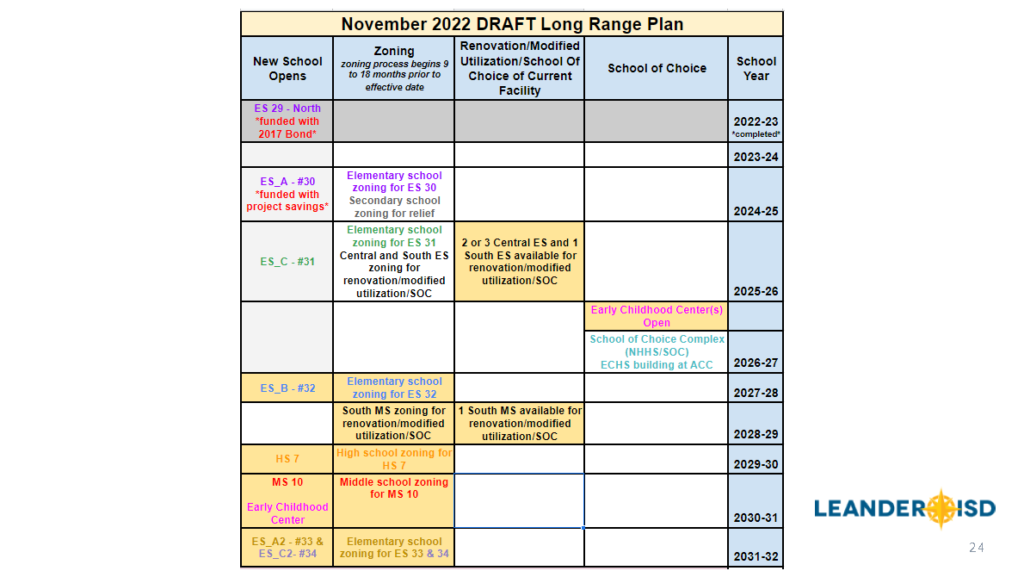
🎬 3.C. Discussion of Updates to the 10-Year Long Range Plan
The Long-Range Planning Committee, a team of three Board members and a handful of district administrators, has been hard at work over the past year to develop a 10-year outlook for facilities needs of the district, critically analyzing the domino effects those needs have on things like future bond packages, attendance zoning and other areas of focus.
“We all need to be transparent about the fact that a 10-year plan for zoning is going to require adjustment. The probability that we get the plan perfect is very, very low,” Trustee Aaron Johnson said. “It’s a 10-year outlook, but we need to have expectations that we’re going to iterate and revise as we go. Hopefully, any changes are minimal. Hopefully, they’re relatively insignificant, and we can do them in time so they’re not disruptive for people.”
The latest demographic update with a shifting student population and the rising cost of construction and materials has led to further refinement of the plan and the following recommendations.
Recommendations
As the district looks to push out the need for a seventh high school and a 10th middle school – each with hefty price tags to the tune of an estimated $426 million and $165 million, respectively – a holistic approach to secondary attendance zoning will be needed to relieve schools over capacity and better utilize schools that have available space. This rezoning process would begin immediately and last across Spring 2023, with the finalized plans to be implemented in the 2024–25 school year. This lead time would allow families a full year from when the plan is finalized to help adapt to changes.
For our littlest learners, the district’s 30th elementary school, funded from the project savings of previous bond packages, will continue on track to open in time for the start of the 2024–25 school year. This facility will be built on land near Glenn High School and north of Devine Lake, butting up against San Gabriel Parkway.
At the same time, the Citizens’ Facility Advisory Committee, with six different subcommittees already working to identify needs of existing facilities, will have a renewed focus to help in the community outreach. In addition, the district will be laying out a plan for the CFAC in the near future.
All of these recommendations would happen in conjunction with a community engagement effort over the coming months, seeking to form a plan together for what the future looks like in the district. Through these efforts, district leaders will be seeking input to key questions and topics:
- Modified utilization and renovation of existing under-enrolled schools
- Comprehensive rezoning efforts to alleviate the need for new construction
- Early Childhood Centers
- Schools of Choice
- New facilities where and when necessary
“I don’t think we’ve gone out and really understood from the community: ‘What do you want us to do? How do you want us to step forward?’” Superintendent Bruce Gearing said. “I really believe we have to have a good handle on that if we’re going to step forward successfully.”
“I think this uncertainty is important to realize,” Board President Trish Bode said, thanking Gearing for being vulnerable and sharing the unknown with the Board. “We have a lot of work ahead of us in listening to our community and getting their buy-in.”
District Families May Face Secondary Attendance Rezoning
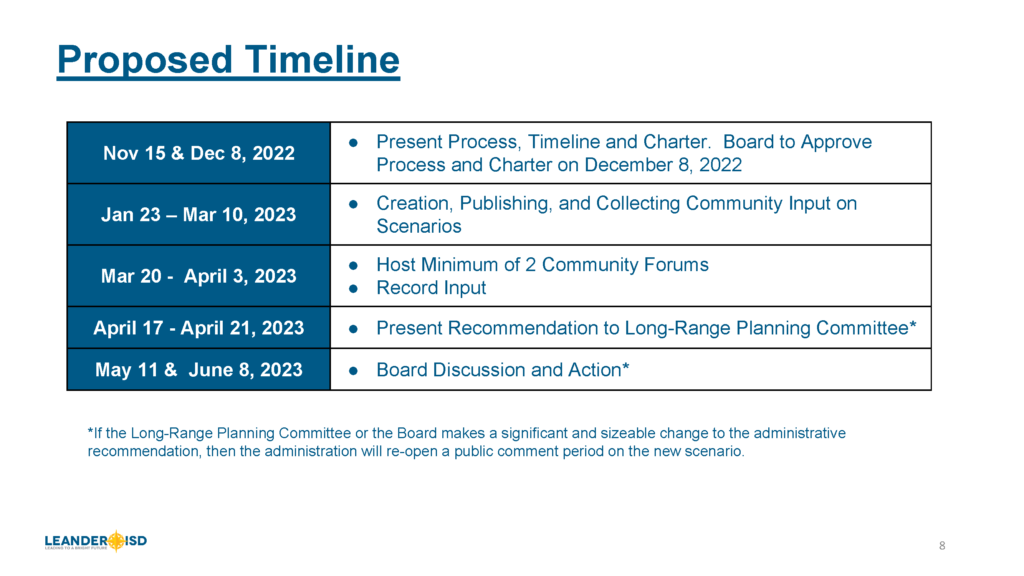
🎬 3.B. Discussion of Attendance Zoning for Secondary School Relief Process and Charter
As referenced in the Long-Range Plan section above, a rezoning of the middle school and high school levels is needed in order to better utilize existing facilities, relieve overcrowding and delay the need for new facilities, which have seen a recent sharp uptick in cost.
The first step in any rezoning effort is the approval of the process and charter by the Board, forming the development criteria for any rezoning scenarios. The charter is slated to be approved at the Dec. 8 meeting, with initial scenarios being presented to the community in January. Throughout the process over the following months, there will be many opportunities for community feedback, a critical component before a recommended set of plans is brought to the Board in May and June.
CFAC Provides Progress Report
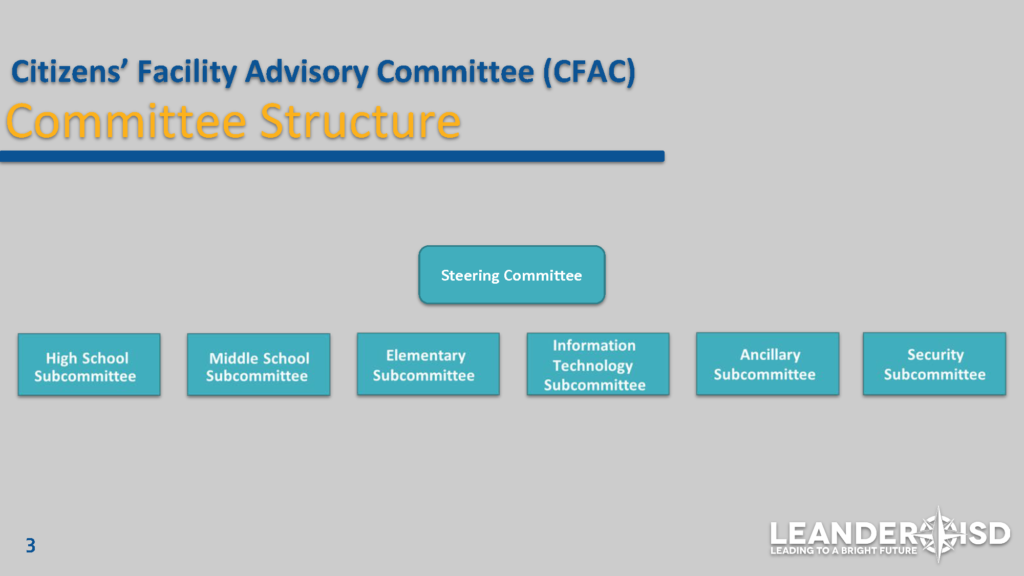
🎬 3.D. Citizens’ Facility Advisory Committee Update
Since its formation earlier in this fall semester, the Citizens’ Facility Advisory Committee (CFAC) and its six subcommittees have been working to identify needs of existing facilities in the district. This group of community volunteers works with district leaders to develop a deep understanding of their area of focus.
CFAC has the following subcommittees:
- High School
- Middle School
- Elementary School
- Technology
- Ancillary Services
- Security
As referenced in the Long-Range Plan section above, CFAC’s work will continue with a renewed focus that more clearly defines its purpose.

